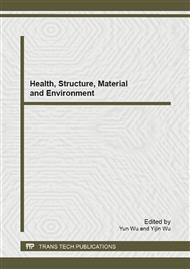p.876
p.882
p.888
p.894
p.899
p.905
p.911
p.922
p.926
Ultrasound-Assisted Emulsification Microextraction-Solvent Floating Solidification-Pre-Column Derivatization for the Determination of Estrogens in Water Samples
Abstract:
The method of ultrasound-assisted surfactant-enhanced emulsification microextraction combined with pre-column derivatization (UAE-SEEME-SFO-PD) was developed to simultaneously extract and determine the estrogens such as estriol (E3), bisphenol A (BPA), 17α-Ethynylestradiol (EE2), estradiol (E2) and nonylphenol (NP) in water samples. Central composite design was employed to investigate the effects of the factors, including emulsifier (Tween 20) volume, extractant (dodecanol) volume, ultrasonic power, ultrasonic time, the amount of derivating agent (paranitrobenzoyl chloride), temperature of derivatization and derivatization time, on the response of analytes. The optimized analytical conditions were obtained by response surface plot as follows: 40 µL of Tween 20, 35 µL of dodecanol, 62.5 W of ultrasonic power, 15 min of ultrasonic time, 5.0 mg of derivating agent, temperature of derivatization 35 °C and derivatization time 2.0 min, with the linear range of 0.02-2.0 mg/L for E3, BPA, EE2 and E2, 0.02-1.0 mg/L for NP, respectively (the correlation coefficients ranging from 0.9950 to 0.9999). Also, the limits of detection were found between 1.06-5.04 µg/L. The spiked recoveries of estrogens under different spiked levels (0.02, 0.20 and 1.00 mg/L) for estrogens were in the range of 88.08-117.33%, and the relative standard deviation (RSD) was of 0.75-9.73%. Additionally, the method could be applied to analysis of estrogens in real water samples (collected from upstream and downstream of a reservoir), and the relative recoveries of estrogens under spiked levels (0.05 and 0.50 mg/L) for estrogens in real water samples were in the range of 85.18-124.17% (RSD 0.30-10.71%).
Info:
Periodical:
Pages:
899-904
Citation:
Online since:
February 2013
Authors:
Price:
Сopyright:
© 2013 Trans Tech Publications Ltd. All Rights Reserved
Share:
Citation:


